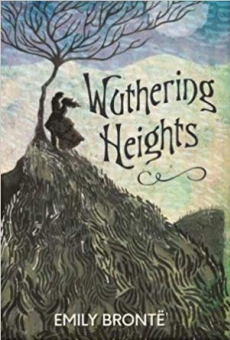
Email: reecejordan98@hotmail.co.uk
Total Article : 168
About Me:18-year-old sixth form student, studying English Literature, History and Government and Politics. My articles will broadly cover topics from the current affairs of politics to reviews of books and albums, as well as adding my own creative pieces, whether it be short fiction or general opinion.

It is one force admitting its incompatibility with the other. Catherine descends into madness, and ‘[tears] the pillow with her teeth’, allowing the feathers to fly out. Torn between her love for her true self, and the artificial identity that has suppressed it, this image is symbolic of Catherine’s want to destroy the latter and allow the former to be free to do as it will. She wishes to be free of the ‘shattered prison’, which is not only the confinement of Thrushcross Grange, but the mental imprisonment it has established within her since she has been there. The tug-of-war has finished, but only by the rope snapping; by Catherine’s mind being ‘shattered’. Thus, Bronte poignantly suggests that an identity cannot hold innateness and social conditioning in equal measure, one must be kept separate from the other. At least, that would be the only helpless interpretation offered if the novel finished with Catherine’s death.
With the second volume of the novel, Emily Bronte offers a token of hope – and this revolves around the second generation. Lockwood’s final question of the first volume, whether ‘the daughter turned out a second edition of the mother’, hangs over the second volume. The very repetition of the name invites a comparison between them. As Miller asks: ‘How can a name be “proper” to a character and indicate his individuality if it’s also held by others?’ Unnervingly, the first half of the second volume seems to indicate that Cathy would turn out to be ‘a second edition of the mother’. We are told that Edgar never ‘did speak a harsh word to her’, and that Nelly ‘did not fear her breaking bounds, because the gates were generally locked’. This hints at the same sheltered ‘prison’ that Catherine was victim of at the Grange. Even worse is that the love that appears to be sprouting between Cathy and ‘Pretty Linton’ is based on contrivance. The letters they exchange between each other concluded ‘in the affected, wordy way that a school-boy might use to a fancied incorporeal sweetheart,’ which hints at learned clichés – an echo of Catherine’s clichéd reasons for marrying Edgar. It would seem that the novel is going full circle, something which Leo Barsani comments on: ‘It’s as if Emily Bronte is telling the same story twice and eliminating its originality the second time.’ There is a disconcerting sense that Bronte is luring us to interpret that loss of true love and the suffocation natural identities almost as a fact of life, something which will go on forever.
However, the latter part of the novel with Cathy and Hareton’s love dispels such fears. When Lockwood goes to visit Wuthering Heights a year later he notices its ‘improvement’. He notices, in contrast for his struggle to get into the home in 1801, he ‘had neither to climb the gate, nor to knock – it yielded to [his] hand.’ This highlights Wuthering Heights’ openness; the fixation on separation has vanished, now there is ‘unobstructed admittance’. Thus, it is apt that the word Lockwood should hear Cathy teaching Hareton is ‘con-trary!’ – the house, like Cathy’s change of attitude from ridiculer to teacher of Hareton’s education – is very much contrary to what we have known it to be. Mary Visick draws attention to Bronte’s previous writing as forming the basis for the novel. This is an interesting frame through which to read the novel, but instead of Gondal poems, it seems more appropriate to look at her essay, ‘The Butterfly’.
Image Credits: amazon.com

0 Comment:
Be the first one to comment on this article.